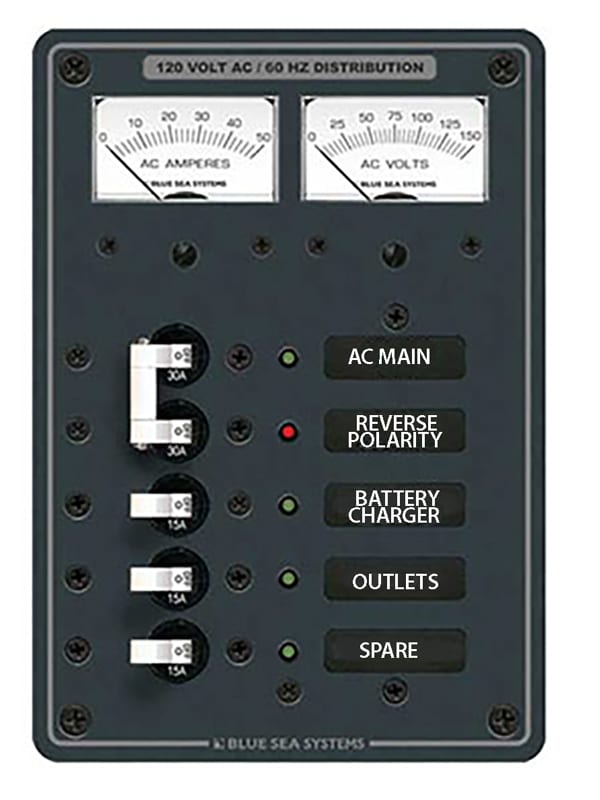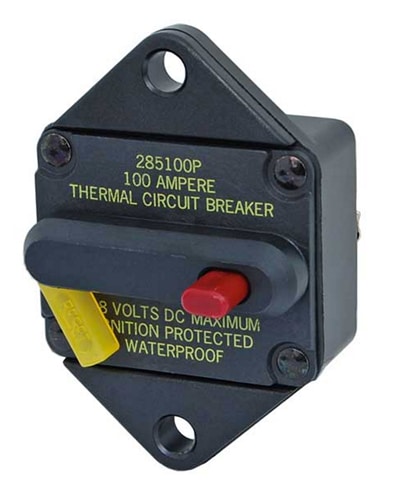
This article is an excerpt from NauticEd’s online Skipper Large Keelboats Course, a comprehensive online sailing course for beginner to intermediate sailors to learn how to sail large sailboats 26 ft (8m) and above. The Skipper Large Keelboats course is part of the Skipper Course Bundle of online courses, also teaching you how to master maneuvering under power and docking!
You can learn to sail and improve your sailing with NauticEd, the international leader in sailing education.
Sailboat Electrical Panels
The electrical panel, located at the navigation station, normally has two distinct and separately marked sections; one section is devoted to 110-volt or 220-volt AC power and the other section is devoted to the 12-volt DC power. Learn the location and operation of all circuit breakers on both panels before using your vessel. These panels may be hinged and can easily be opened to inspect wiring or to add or replace circuit breakers.

Typical AC Electric Panel

Typical DC Electric Panel
Circuit Breakers
On the electric panels, circuit breakers and switches serve the same function. That is, they act both as a manual on/off switch for both AC and DC circuits as well as a safety automatic shutoff when they detect a problem that could ruin a piece of equipment or even start a fire. Fuses are out, circuit breakers are in.

Circuit Breaker
Circuit breakers are indeed your electrical friends and should be treated with respect. Trying to override, or wire around circuit breakers can be very dangerous. Breakers may not be rocket scientists, but they know their job and do it well.
The DC power system starts at the battery and passes through a main DC circuit breaker before the current is distributed via the DC electric panel. The two largest DC circuits are usually the engine start and the windlass (anchor winch) circuits. However, the engine start circuit typically does not go through the electric panel. Its switch is on the key-start panel in the cockpit.
The windlass circuit breaker is often located not on the DC electric panel but, for some reason unbeknownst to anyone, in a very hard-to-find location. When you get onto a new vessel, always ask where the windlass circuit breaker is.
This is a typical windlass circuit breaker.

The Windlass Circuit Breaker
The AC shore power enters your vessel through a plug on the stern of the vessel. It then passes through an AC circuit breaker (also usually located in an obscure place on the vessel) before going to the AC electrical distribution panel located at the navigation station. Current is then distributed to the various circuits, each with their own circuit breakers, which are rated in current size appropriate to that circuit.
This may all sound a bit like overkill, but be assured these safety devices are there for you and your vessel’s safety. Study and know each of their functions.
You can learn more in the Skipper Course....
Knowledge and theory for longer distances and overnight sailing in diverse conditions. The Skipper Course is a comprehensive online sailing course for beginner to intermediate sailors wanting to learn how to sail larger sailboats 26ft to 56ft. Or upgrade to the Skipper Course Bundle of online courses to also master maneuvering under power and docking!
